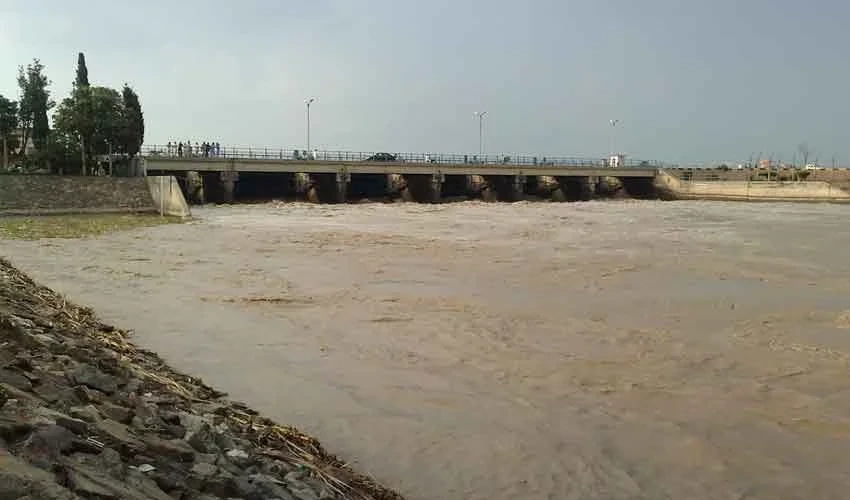The Provincial Disaster Management Authority (PDMA) has raised a red alert over the worsening flood crisis in Punjab, warning that Qadirabad Headworks on the Chenab River is under severe stress and at risk of collapse.
According to PDMA Director General Irfan Ali Kathia, the water flow at Qadirabad has surged to 1,077,000 cusecs, far beyond its design capacity of 800,000 cusecs. Continuous pressure has started eroding the left embankment, raising fears of a major breach. Hafizabad and Chiniot districts are most at risk if the headworks fails.
Rescue teams, heavy machinery, and irrigation staff have been deployed to strengthen the structure. Authorities have ordered the immediate evacuation of nearby villages, with Punjab Police assisting in the operation. Mosque announcements are being used to warn residents and ensure timely evacuation.
READ MORE: Gates Foundation Pledges $1m Aid for Flood Victims
Flood danger is also mounting across Punjab’s river system. At the Ravi Siphon point, water flow has exceeded 91,000 cusecs. Downstream from Qadirabad, the Chenab’s massive discharge is heading towards Trimmu Barrage, which has a capacity of 875,000 cusecs but could face more than 1,077,000 cusecs. At Panjnad Barrage, water flow has surged to 1,428,000 cusecs, against its design limit of 865,000 cusecs.
Officials fear both Trimmu and Panjnad Barrages could come under extreme pressure in the coming days. Emergency plans have been approved, including standard operating procedures (SOPs) to create controlled breaches in embankments if required to protect barrage structures.
A four-member committee comprising the deputy commissioner, army personnel, and officials from the irrigation and communication departments has been empowered to order such breaches using explosives if necessary. Authorities have warned that the most dangerous period for Trimmu Barrage will be Friday night (August 29), while Panjnad Barrage is expected to face peak risk between September 2 and 3.
Officials assured that any controlled breach would be preceded by advance public warnings to minimize loss of life and allow residents time to evacuate.









